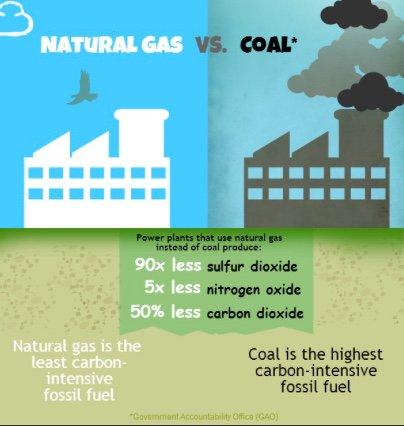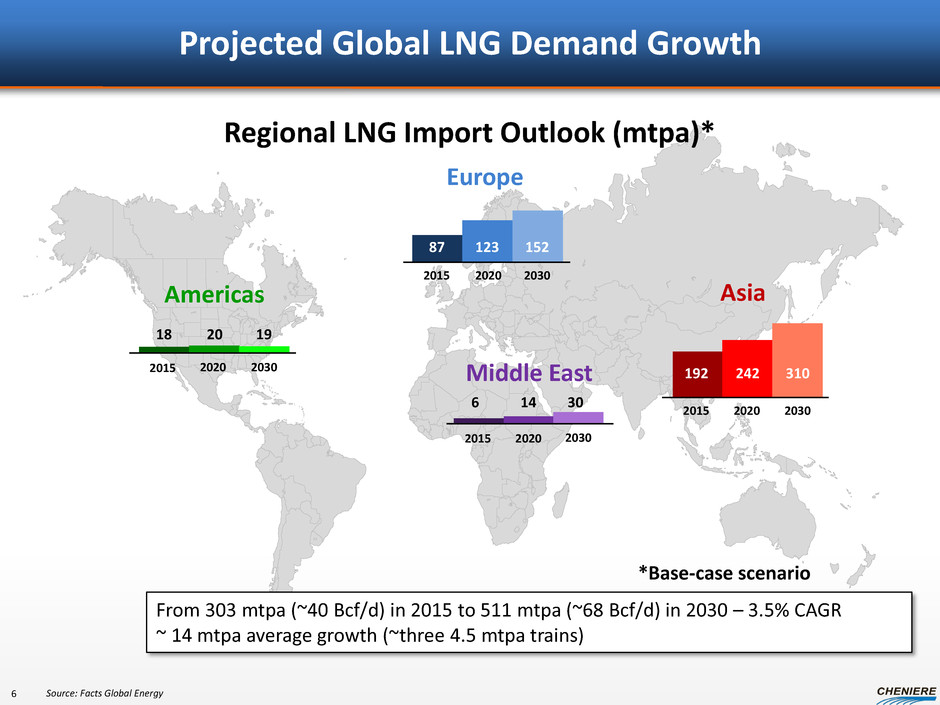
What is LNG ?
Natural Gas is a safe, efficient, clean and reliable energy.
LNG (Liquefied natural gas) is natural gas in its purified and liquefied form. It is the cleanest burning fossil fuel and it creates up to 45% fewer emissions than coal and oil. Natural gas consists mainly of methane with low concentrations of other hydrocarbons (ex: ethane, propane and butane).
LNG Characteristics
Natural gas is odorless, non-pressurized, non-corrosive and non-toxic.
Natural gas is cooled to -160° Celsius where the gas becomes liquid and natural gas in a liquid state (referred as LNG) occupies 1/600 of its original volume. Therefore, LNG can be stored in tanks and loaded easily into ISO Containers or into LNG carriers for safe and efficient shipment across the world.
Natural gas is delivered by pipelines, by vessels, by cryogenic tanks and by trucks to millions of homes and businesses across the world and the LNG industry has an excellent global safety record. Many countries such as India, South Korea and China are increasing their imports and consumption of natural gas every year.
LNG is the bridge between fossil fuels and renewable energy.

Use of LNG
Liquefied Natural Gas is used in the residential sector for cooking and heating purposes and LNG is also used in various industries including:
- Construction
- Manufacturing
- Food Processing
- Mining
- Marine
- Oil & Gas
- Power Generation
- Transportation
LNG is used as an alternative fuel in various mode of transports such as rails, ships, trucks and natural gas vehicles.
LNG Market
The global LNG market is expected to grow in the coming decades with the growing population, the increase of energy consumption, the accelerating economic growth and the increasing preference of cleaner energy in developing economies. Based on many analysis, China will become the world’s top importer of natural gas natural gas from 2019 and the demand has been driven by policy to move to cleaner burning energy source and to help the Country achieve his ambitious air quality targets.
The main exporters of LNG are Australia, Qatar and the USA and the main importers are Japan, South Korea, China and Europe. The LNG is transported using large cryogenic tankers that can carry up to 266,000 cubic metres of LNG (approx 121000 tons).
International Energy Agency says that the demand in China for LNG is expected to rise by 60% between 2017 and 2023 and despite the huge increase in LNG imports in China in the past few years, there are still fears of a gas shortage in the next decade if no new investments are made in production and in adequate storage. LNG is a clean fuel and Companies in China that are switching to natural gas are helping to improve the air quality and to reduce CO2 emissions greatly.
Click here to see a list of the top producing countries of natural gas.
The export of LNG from Canada could facilitate Canadian natural gas production growth and also result in significant economic growth for the Country.
LNG Global Markets

Source: Cheniere
LNG Value Chain
An LNG supply chain consists of five main activities:
- Exploration and Production of natural gas (Extraction of natural gas).
- Treatment (The process includes removing liquids, solids, vapours and impurities).
- Liquefaction of natural gas into LNG (convert the natural gas into liquid form which reduces its volume for easy transportation purposes).
- Shipping of LNG (After liquefaction, LNG is loaded onto specially designed ships or into ISO containers to keep the LNG in liquid state during the transportation to the final destination).
- Receiving, Storage and Distribution (An LNG receiving terminal comprises LNG storage tanks and regasification facilities that convert LNG back to its ”gaseous” state for distribution to end-users).
* LNG that is imported in ISO Tank Containers can be moved directly by truck from the LNG Liquefaction plant, then shipped by container cargo and moved by truck once it arrives at the destination port.
LNG can be transported by pipeline, by trucks, by LNG vessels and in Cryogenic ISO Tank Containers.
LNG Tankers
Once the tanker reach the dedicated import terminal, the Liquefied Natural Gas is stored in large storage tanks and compressed and vaporized for injection into the gas transmission grid.
Most LNG import terminals also have truck loading facilities where the product can be loaded on specialized trailers and containers for the distribution to customers and end-users. LNG enables cost competitive long distance transport of natural gas and it can also be easily transported in ISO tank conatiners to any ports that accepts DG. The volumes that are distributed by containers represent a small fraction of the total LNG imports but the demand for LNG is growing fast.
LNG ISO Containers
The LNG that is distributed by ISO containers can be used in a wide range of applications (ex: industrial processes, power plants, road and marine transport, etc.)
and the transportation can be applied over long distances and through the traditional sea routes using container ships. Therefore, it enables a cost competitive fuel supply to end-users and it also brings some flexibility to importers, distributors and traders who don’t have access to LNG import terminals and/or financial capacity to buy a whole cargo.
LNG Virtual Pipeline
The LNG can be move easily from a small-scale LNG Plant or refilling station to the end user by using LNG ISO containers. Transportation mode by land (truck), sea (standard containers vessel) and rail. Click here to learn more about LNG-to-Power solutions.
Traditional Supply Chain
The standard LNG supply chain requires large LNG receiving terminals, onshore storage tanks and LNG carriers to move the product from a producing Country to the destination port/receiving terminal.

Global LNG Trade
Global LNG trade increased to 354 MT in 2019, an increase of 13% versus 2018. This is the sixth year of consecutive growth in global LNG trade.
Bangladesh, India and Pakistan imported 36 million MT in 2019, an increase of 19% over the previous year, pointing to emerging growth countries in Asia.
The long-term outlook is promising for the LNG industry. According to industry’s forecasts, the demand is expected to double to 700 million MT by 2040 which is bringing confidence in the role of natural gas in shaping a lower-carbon energy system across the world and as the best transition towards renewable energy.
Also and due to the global coronavirus crisis in 2020, some large LNG projects are expected to be delayed which could bring a certain balance between the offer and demand. At Canada LNG Group, we believe that the demand for LNG supply solutions using LNG containers should grow in the coming decade due to more end users and power generation companies looking for flexible solutions and that wish to switch to a cleaner fuel (compared to Diesel as an example).
LNG and Gas pricing
International gas prices hit a record low in 2019 in 2020.
- Asian spot average of less than US$5.50/mmBtu, which is the lowest in 10 years.
- Henry Hub (USA) front month prices averaged US$2.50/mmBtu.
- More than 1500 LNG cargoes were traded globally in 2019.
Liquefaction Plants
Global liquefaction capacity reached approximately 430 MTPA in 2019.
LNG Shipping
The global LNG fleet in early 2020 consisted of more than 5000 active vessels, including 34 FSRU (Floating Storage Regasification Units) and four FSU (Floating Storage Units. Overall, the global LNG fleet grew by 8.4% year-on-year in 2019. By comparison, the annual growth of LNG trade in 2019 stands at 13%, showing a good balance between growth in the LNG shipping market and LNG trade.
*Source: International gas union ( https://www.igu.org/ )
The COP 26 summit (Glasgow 2021)
The world agrees to phase-out fossil fuel subsidies and reduce coal
Nearly 200 countries at the UN climate change summit in Glasgow have committed to revisit and strengthen their 2030 emissions reductions plans, keeping the door open to 1.5°C temperature goal.
It is certainly not enough. But this is a process.
Accelerating the transition from coal to clean power.
A just transition to clean energy and the rapid phase-out of coal has been at the heart of the COP26. More than 40 countries have committed to shift away from coal including Indonesia, Vietnam, Poland, South Korea, Egypt, Spain, Nepal, Singapore, Chile and Ukraine. Countries also committed to scaling up clean power and ensuring a just transition away from coal.
Strengthening emissions targets: The Climate Pact signed at COP 26 will speed up the pace of climate action. All countries agreed to revisit and strengthen their current emissions targets.
LNG is a bridge between fossil fuels and renewable energy.
”By generating 30% less carbon dioxide (CO2) than fuel oil and 45% less than coal, LNG is regarded as the ”cleanest” fossil fuel. With natural gas use expected to account for 25% of the world energy portfolio by 2035, LNG is seen as an ideal energy alternative to help reduce greenhouse gas emissions and to bridge the gap between more harmful fossil-based fuels and future sustainable technologies such as hydrogen.”
LNG can service as a backbone of stable energy production while markets build their investment in renewable.
People and countries must act Today with an efficient and realistic energy transition plan in order to save our Planet for Tomorrow.
Sources:
https://ukcop26.org/
https://www.gasworld.com/karpowership-cop26-and-lngs-role-in-the-energy-transition/2022174.article
Canadian Resources and Information On Natural Gas
- Canadian Association of Petroleum Producers – www.capp.ca
- Canadian Centre for Energy – www.centreforenergy.com
- Canadian Energy Research Institute – www.ceri.ca
- Clean Air Strategic Alliance – www.casahome.org
- Energy Resources Conservation Board – www.ercb.ca
- Environment Canada – www.ec.gc.ca
- Learn more about LNG – https://gasmobility.totalenergies.com/insights/downloads
